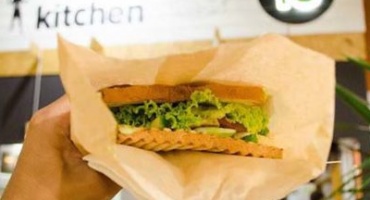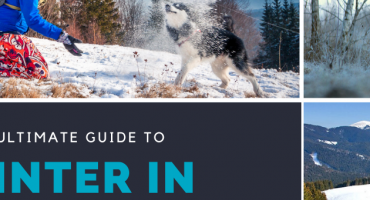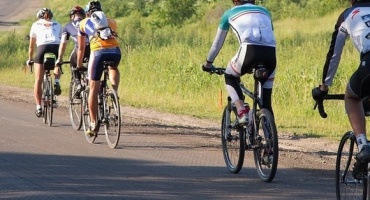WHAT’S HAPPENING IN UKRAINE 2014 – TRAVEL ADVICE
2019-02-04 17:49:04
12 MAR-2014
As of March 21st Russian Federation annexed Crimea officially. This technically enters Ukraine into a state of war with Russia. It is highly advised to avoid visiting Crimea as Ukraine considers it an occupied territory.
Dear travelers,
Many people are asking us now – what the heck is happening in Ukraine? Did you just have a revolution? Was it a fight-for-democracy fling? Are you going to war with Russia?!
And most importantly – IS IT STILL SAFE TO VISIT?
While we’ve refrained from participating in political debates, we now would like to give you a clear picture of what’s going on and dispense our simple advice on how you, as a traveler, should deal with it.
THE STORY IN ITSELF IS VERY LONG AND COMPLICATED TO GO INTO A LOT OF DETAILS. HERE’S A SHORT SUMMARY OF EVENTS.
Government >> Everything started in November 2013. After months of preparations to sign the cooperation agreement with EU, our then-President Victor Yanukovych decided that it wasn’t all worth the trouble and single-handedly turned the tables around – Ukraine was not heading towards a treaty with Russia.
People >> This pissed off quite a large number of Ukrainians, who were hoping for a closer relationship with European Union. Few thousands showed up on the street. First alone, then accompanied by the opposition parties.
A week later the protest started dwindling down and pretty much everyone was ready to go home.
Government >> Then, one night, when a mere group of few hundred young students was camping out in the main city square (Maidan), riot police showed up and seriously beat them up.
Now, few important things to know: a) Ukrainians really don’t like violence, b) we never had protests dispersed violently, c) majority of protesters that night were pretty much university kids
People >> All of that really pissed a lot of people off. They came out again to the Independence Square in Kyiv – also known as Maidan.
This time their demands were not just return to signing the EU agreement, but a complete change of the whole political system in the country – down with all the corruption, police mafia, unfair elections, limited freedom of speech and centralized governance. The main demand was though for Yanukovych to go.
With only one minor scuffle at the President’s Administration on December 1st, all protests were held peacefully. Protesters camped out on Independence Square, made lots of speeches, sang national anthem and did targeted protests at various governmental offices.
This was going on for two months.
In freezing temperatures with up to -15.
With no reaction from the government – no one was fired, not even one police officer.
Government >> Then, on January 16th, parliament – under the government rule – passed the so-called dictatorship laws that severely restricted the right of free speech and protests in the country. At the same time people started disappear, with one person showing up killed few days later. Many more got arrested and thrown into jail.
People >> Well, this time people got really-really pissed and tried going up to the parliament building, which was protected by the army and riot police. Scuffles happened. Molotov cocktails were “fired”, bricks were thrown.
Government >> Few days of negotiations later, parliament denounced the law partially but beatings and disappearances continued. Then on January 22 during one of the scuffles riot police shot a protester – a native Armenian Sergiy Nagoyan.
People >> From there the fall of Yanukovych started. Scuffles continued, negotiations continued, short moments of peace continued, and protesters were pushing on. EU and USA tried bringing all the parties together for a negotiation.
Government >> decided that it’s going to take no crap from protesters and started using snipers to shot them one by one. In two days around 100 people were shot.
People >> were in shock, but were still standing.EU finally got their act together and came to Kyiv for a more direct negotiation between the government and opposition. They agreed on a deal, which included Yanukovych leaving by end of the year. People told them – hell no! Leave now, or we go to your palace.
Government >> Yanukovych escaped the country.
First part of the revolution came to an end.
OF COURSE WE DID.
Not everyone in Ukraine supports closer EU integration and plenty of people want to be closer with Russia. This is particularly true for Eastern and Southern Ukraine. And even more true for Crimea.
What’s the exact percentage?
According to multiple polls, around 41% of Ukrainians prefer integration with EU, while 33% support integration with Russian-led Customs Union.
But guess what – it’s much more complicated on a second look. Despite that fact that many media around the world show Ukraine divided into two parts – Russian-speaking East vs Ukrainian-speaking West, majority of young people in the country prefer EU integration, even in the predominantly Russian-speaking regions of Ukraine (64% supporting the EU, while only 20% supporting the Customs Union with Russia).
And here we come to the big question
WELL, WE WARN YOU – THE EXPLANATION IS GOING TO GET EVEN MORE COMPLICATED…
As you may have heard around online, around 54% of Crimean population is ethnically Russian, with 24% – ethnic Ukrainians, and 12% – ethnic Crimean Tatars. Until 1954 it did belong to Russia, and was given to Ukraine as ‘a present’ by Mr. Khrushchev. The city of Sevastopol in Crimea also hosts Russia’s Black Sea Naval Fleet – being the only warm sea port, it’s kind of a big thing for Mr. Putin.
Now, traditionally Crimea has always been pro-Russian, and majority of people there didn’t support Maidan, and want a bigger autonomy in managing their land.
“Ok. That kind of makes sense. What’s all the big deal then?”, you’d say.
Well, let’s put it here in a simpler terms. Let’s compare Maidan protests and current Crimea invasion by Russia.
Maidan protests
Peaceful protest >> Police beating >> Peaceful protest for two months >> Police kills three >> Molotov cocktails and clashes with protesters >> Police kills 100 >> Resolution achieved
Crimea invasion
two large peaceful protests in Sevastopol and Simferopol >> next day unknown armed men capture parliament building >> in captured building deputies elect new PM in a closed off/no access session >> unknown armed men surround Ukrainian military bases >> unknown armed men block major airports and entrance roads to Crimea >> unknown armed men in unknown armed vehicles roam around the peninsula >> Crimean parliament votes to run a referendum on joining Russia >> Crimean parliament makes a decision to join Russia ahead of referendum, with the last one being ‘…just a confirmation’
You see the trend – Quite a lot of unidentified armed men around in a rather volatile environment.
Mr. Putin says these men aren’t Russian forces. Effectively, they just look Russian, wear Russian military uniforms, carry Russian guns and (sic!) drive Russian vehicles with Russian car plates.
*no comments*
Now, as you can imagine – quite a large number of Ukrainians (big majority of them actually) are starting to hate Mr. Putin and rightfully consider the Crimean crisis as an act of aggression from Russia.
UPDATE
Russia officially annexed Crimea. This move is not recognized by international community and obviously by Ukraine. Technically Ukraine is now in state of war with Russia, since Ukrainian military and navy are still located in Crimea.
To put it simply – most places in the country are completely safe for visiting.Yes, you will see protester’s barricades in the capital, and perhaps witness a protest or two in the major cities over the weekend. However, the situation is peaceful and contained.
Eastern Ukraine, such as Donestk, Kharkiv and Lugansk, still regularly has pro-Russian protests, and – with opposing protest nearby – there can be few scuffles here and there. Those cities aren’t actually on tourist maps anyways. Still – we advise for you to read news beforehand or ask us before you head there.
(updated) Crimea should be off-limits at the moment. Airport receives only airlines from Moscow. Planes from Kyiv and Turkey are canceled. Trains still run to Crimea and back, however, expect to be checked by the self-appointed ‘border guards’.
Note also that roads to Crimea have block posts manned by the Russian and Crimean military men.
With guns.
Not much fun.
So preferably – don’t go there.
We do not know of any known assault on a foreigner (outside of Crimea area), however, here are few more notes.
- Avoid any protests. While majority of them are peaceful, the situation is quite tense and scuffles can break out at any time. Better to stay out of the possible danger.
- Always leave your contact at the hotel/apartment/friend’s place, wherever you are staying and let them know when you are expected to come back.
- Write down the emergency number of your embassy/consulate and keep in mind Ukrainian police hotline: 102
Here’s a good selection of resources explaining the crisis in more details:
- uacrisis.org – Media center by Ukrainian journalists
- kyivpost.com – Ukraine’s largest English-speaking newspaper
- Timothy Snyder articles – good in-depth insight into Ukrainian revolution
- On Ukraine’s East-West divide – and how not simple it is
We support Maidan. We stand for the values that Ukrainian revolution is fighting for – no corruption, equality and freedom. A lot of our colleagues and partners were actively participating in protests as well.
We do understand that not everyone agrees with us, and are ready to work together with others to compromise and build a rich and flourishing Ukraine.
We do not tolerate the actions of Russia’s President, and strongly condemn Putin’s aggression in Crimea. We do, however, separate the actions of Mr. Putin from our Russian friends and colleagues.
Travel with us
Join thousands of travelers, who explored Ukraine with our adventure, cultural or heritage tours since 2011.Trusted by National Geographic, BBCW, Wild Frontiers and others.
Ask us anything



